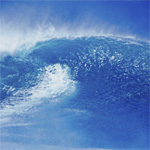Military Invasion
America occupies a strategic position in the world. Protected on both sides by immense oceans, it's far less likely to be invaded by a hostile nation than areas like the middle east, where warring factions share borders.
Current Wars
On June 28 of 2021, there are four ongoing conflicts that have caused at least 10,000 direct, violent deaths in battles, in a current or past calendar year.
13 conflicts have caused at least 1,000 but fewer than 10,000 direct, violent deaths in a current or past calendar year.
And 29 conflicts have caused at least 100 but fewer than 1,000 direct, violent deaths in a current or past calendar year.
You can get a list of all the ongoing armed conflicts here: https://en.wikipedia.org/wiki/List_of_ongoing_armed_conflicts
There are 8 primary reasons countries go to war.
Economic Gain
Territorial Gain
Religion
Nationalism
Revenge
Civil War
Revolutionary War
Defensive War
Your job is to track those triggers and see if any of them are escalating dangerously. When you start to see problems, you have to make a plan to either stay and fight, stay and hide or flee.
Don't pretend it can't happen in America. On January 6, 2021 it took little more than the lie of a rigged election to send hundreds of protestors storming into the capitol building in an attempt to overturn a fair and democratic vote.
Thousands of people are calling for a new revolution to overthrow the existing government. It's unlikely they will succeed, but if you're in an area where fighting breaks out, you need to know what to do.
Start by evaluating your position. If it's only a minor skirmish, make sure you have the supplies you need to survive during the interruption. If it's a full-scale conflict and the government is unlikely to stabilize within a few weeks or months, you need to leave or become self-sufficient.
How Can You Survive In A Warzone With No Military Training?
The key is making plans NOW. If you can't stay where you are, you need to have a plan to get out.
Look at other states, regions or countries near you and familiarize yourself with how they work. Do they allow immigrants, and if so, what are their requirements to move? How would you get there, and how would you support yourself once you arrived?
Even if you never need that knowledge for survival, learning more about other places can give you insight into ways you can make things better where you are.
Preparation - Survival
To handle the short-term disruptions, from a few days to a few weeks, these are the things you'll usually need.
Water
One gallon per person per day for several days, for drinking and sanitation. You can survive on as little as a quart a day, but that's the absolute minimum. Consider buying a heavy-duty filter so you can purify more water if you need to. I keep 5-gallon collapsible containers that I can fill and refill when the need arises.
Food
At least a three-day supply of non-perishable food. In areas prone to significant disruptions like earthquakes or hurricanes, you might want to consider a minimum 30-day food supply. Remember to get enough for anybody you think might be with you during the emergency. Many companies sell long-term shelf-stable foods in bulk.
Battery-powered or Hand-crank Radio and a NOAA Weather Radio with Tone Alert
Flashlight and a Solar/Hand Crank Lantern
First Aid Kit
Prescription Medications
Non-Prescription Medications
Make sure you have pain relievers, anti-diarrhea medication, antacids or laxatives.
Extra Batteries
Whistle
Use to signal for help.
Dust Mask
To help filter contaminated air.
Plastic Sheeting and Duct Tape
To shelter in place.
Moist Towelettes, Garbage Bags and Plastic Ties
For personal sanitation.
Wrench or Pliers
To turn off utilities.
Manual Can Opener
For food.
Local Paper Maps
Cell Phone with Chargers and a Backup Battery
Solar Battery Charger
For phone, radio and flashlights.
Additional Supplies
Masks
For everyone ages two and above.
Soap, Hand Sanitizer, Disinfecting Wipes
To disinfect surfaces.
Prescription Eyeglasses and Contact Lens Solution
Infant Formula, Bottles, Diapers, Wipes and Diaper Rash Cream
Pet Food and Extra Water
For your pet.
Cash or Traveler's Checks
Important family documents such as copies of insurance policies, identification and bank account records saved electronically or in a waterproof, portable container.
Sleeping Bag or Warm Blanket for Each Person
Complete Change of Clothing and Sturdy Shoes
Appropriate for your climate.
Fire Extinguisher
Matches in a Waterproof Container or Lighter with Fuel
Feminine Supplies and Personal Hygiene Items
Mess Kits, Paper Cups, Plates, Paper Towels and Plastic Utensils
Paper and Pencil
Books, Games, Puzzles or other Activities
Defense Items
Pepper spray, a taser, a handgun and ammunition are all things you might consider having on hand to protect yourself and your loved ones. If you have defensive items, make sure to learn how to use and maintain them before a crisis.
Barter Items
When supply chains break down, people will begin trading things instead of currency. So if you have extra alcohol, coffee, cigarettes, candy, batteries or lighters, you can use them to get things you might need.
Return to 101 Ways to Die Home Page
This information is presented to make people aware of the larger world around them. If you can prepare for something as devastating as this, you're much more likely to be ready for smaller disruptions. Be aware and prepare.
6/6/2020
Updated 6/28/2021
Updated 12/6/2021


